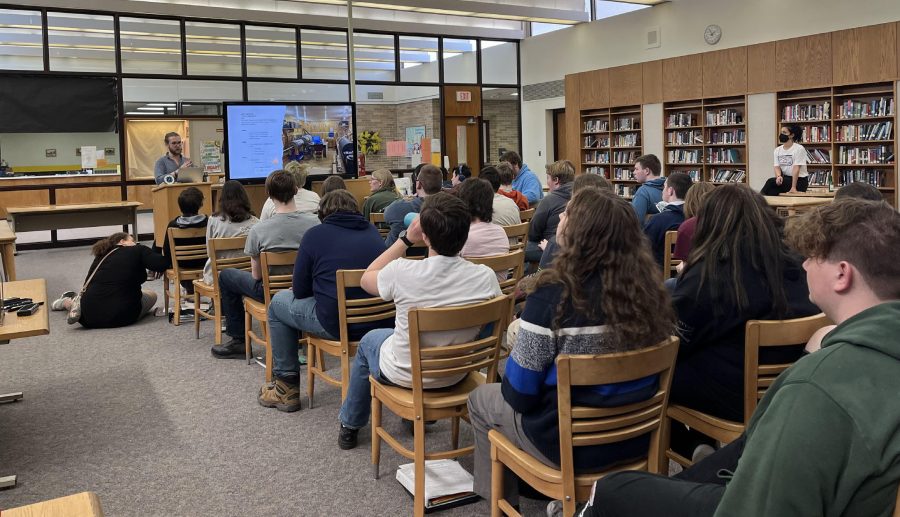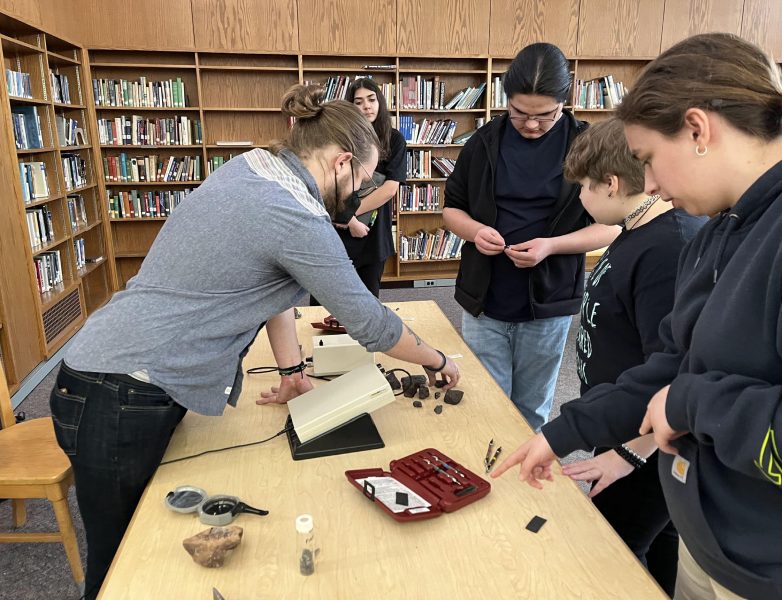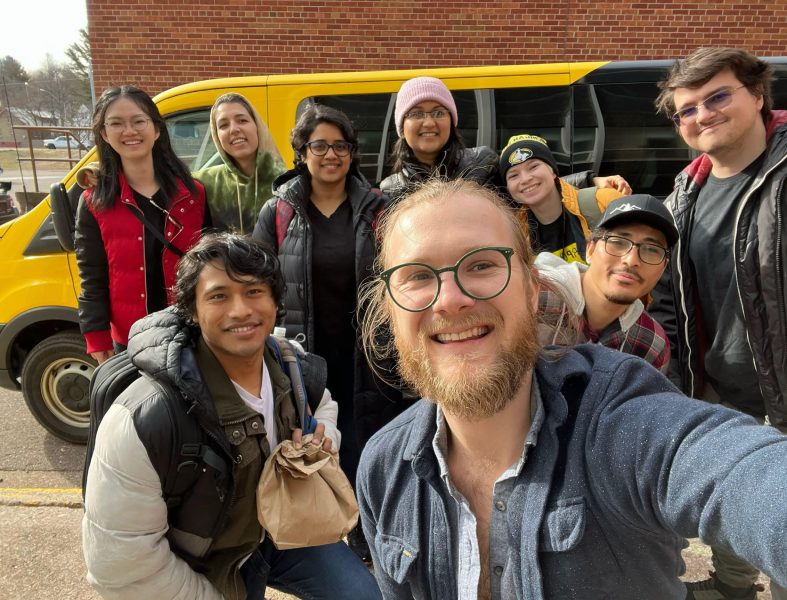Geophysics Ph.D. student Gabriel Ahrendt recently participated in an outreach activity at the Gwinn HS organized by Michigan Tech Women in Physics. On April 28th, he and the six other chapter members visited Daniel Kelpela’s junior and senior physics classes to give presentations on each member’s research and their particular concentrations in physics— including geophysics, atmospheric physics, applied physics, materials science, and astrophysics.
Gabriel presented his research on using rock magnetism for mineral exploration, structural mapping, and tectonic studies using paleomagnetism, as well as the timing of the Earth’s early inner core formation.
The 70 high schoolers received a basic rundown of the researchers’ projects, including a basic synopsis of the topic, methodology, and raison d’etre. Here, the students received some insight into applied and theoretical physics research such as magnetic geodynamo, simulations of ice nucleation and cloud seeding, phone battery design and production of synthetic magnets, studies on the effect of airborne particulates on climate, and the search for dark energy.
During the demonstrations, the students were able to ask more personal questions of the researchers and share their interests after finishing high school. A few showed interest in attending Michigan Tech for geology and geophysics!
After the presentations, the students walked around to 10 different demonstrations of basic physical principles ranging from concepts like static friction — where two students tried to rip apart two phonebooks connected by having their pages intercalated, to concepts like resonance, where they made water vibrate through the audible properties of a brass bowl. Other demos included showing optical principles of diffraction through laser pointers diffracting off of CDs and DVDs, and conservation of momentum while spinning. Gabriel presented principles of rock magnetism by differentiating magnetic minerals by measuring their susceptibility and physical properties.
Gabriel’s Ph.D. research is supported by the USA National Science Foundation and the US Geological Survey. He is advised by Dr. Aleksey Smirnov.


